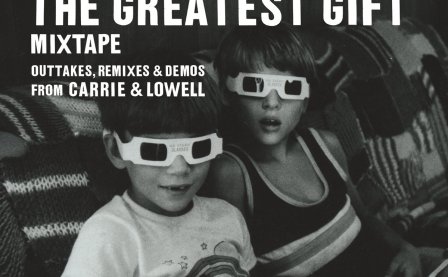In a perfect musical world, a movie’s score could stand on its own without the support of the film it narrates. It would seamlessly transfer the film’s story into sound and demand the kind of devoted attention that can only be lavished by mustachioed gentlemen in red velvet armchairs, waving their hands through the air like emotionally overwrought conductors lost in auditory bliss. This kind of score cannot be relegated to background music — it is not the right choice for a dinner party, nor can it gently lull you to sleep. It cannot be talked, thought, or slept over.
No such luck with Sufjan Stevens' The BQE.
The project began in 2007 as a Brooklyn Academy of Music commission for the Next Wave Festival, but it was shelved for two years following Stevens’ massive 36-person orchestral performance (which included five hula hoopers). When he finally finished mixing and editing the massive project, he was left with a 13-track score, The BQE film, extensive liner notes, and a comic book. Needless to say, this is Stevens’ biggest undertaking since the 50 states project, and he certainly meets any expectations one could have of an artist embarking on their first major film/music suite.
To be sure, The BQE score isn't an utter failure on its own, but it's clearly missing the dramatic effect found in the rest of Stevens’ eclectic seven-album catalogue. Part of Sufjan’s appeal as an artist is in his unique combination of subdued, almost childlike literary-folk vocals with swelling orchestral maneuvers, like in Illinois’ “Chicago” and Michigan’s “For the Widows in Paradise, for the Fatherless in Ypsilanti.” As this lyricless score is without this striking fusion, we're left with only the orchestral side of the equation, rendering The BQE almost ordinary.
While the score is a romantic, swirling orchestration that certainly complements its film counterpart, this ordinarity, if you will, will fill you with an overwhelming desire to either take a nap or respond to all the long overdue emails in your inbox (Hey, we can’t all be Jaws.) The score is almost too successful in its imitation of the sounds of city living, incorporating frenetic techno beats and abbreviated beeps that channel the sounds of 5PM rush hour traffic in "Movement IV: Traffic Shock" and the softly whooshing wind of a rainy Brooklyn night in "Postlude: Critical Mass." If you call New York home, listening to The BQE is the equivalent of sitting on a park bench and watching the city breathe; soothing and pleasant, but probably isn't going to have you rapt with admiration and wonder.
1. Prelude on the Esplanade
2. Introductory Fanfare for the Hooper Heroes
3. Movement I—In the Countenance of Kings
4. Movement II—Sleeping Invader
5. Interlude I—Dream Sequence in Subi Circumnavigation
6. Movement III—Linear Tableau with Intersecting Surprise
7. Movement IV—Traffic Shock
8. Movement V—Self-Organizing Emergent Patterns
9. Interlude II—Subi Power Waltz
10. Interlude III—Invisible Accidents
11. Movement VI—Isorhythmic Night Dance with Interchanges
12. Movement VII (Finale)—The Emperor of Centrifuge
13. Postlude—Critical Mass
More about: Sufjan Stevens




